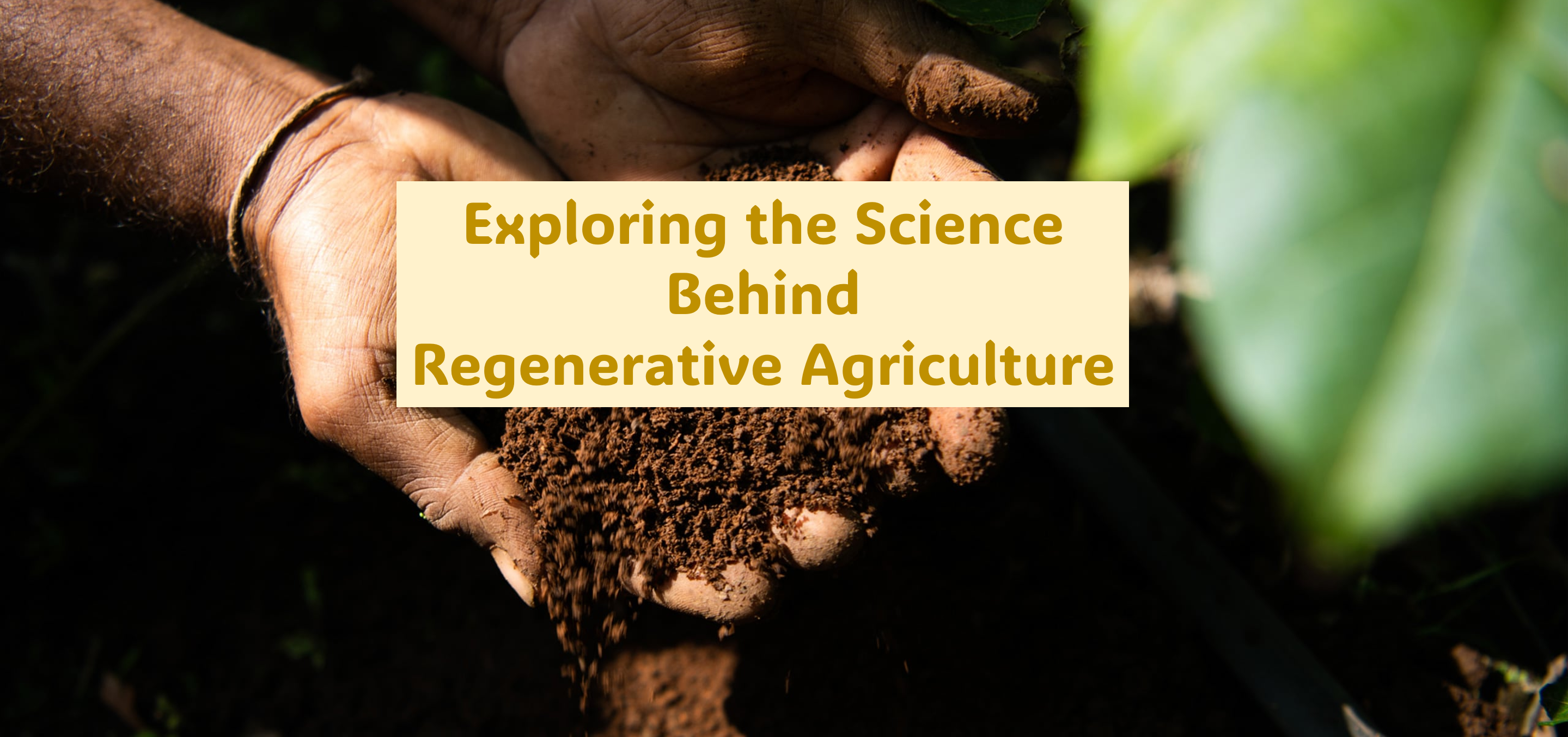In a world grappling with soil degradation, climate change, and food security concerns, Regenerative Agriculture has emerged as a game-changer. Unlike conventional farming methods that deplete soil nutrients, regenerative farming restores soil health, enhances biodiversity, and improves farm resilience.
But why is Regenerative Agriculture a hot topic in agriculture exams like ICAR, NABARD, AFO and state-level exams? Understanding this concept not only helps in cracking competitive exams but also prepares aspirants for interviews in the agriculture sector. Let’s explore this transformative approach and its scientific principles.
What is Regenerative Agriculture?
Definition as per ICAR Syllabus: Regenerative Agriculture refers to a holistic farming approach that enhances soil health, biodiversity and carbon sequestration leading to sustainable food production.
Difference Between Traditional, Organic and Regenerative Farming
Feature | Traditional Farming | Organic Farming | Regenerative Farming |
Soil Health | Depletes nutrients | Avoids chemicals but limited soil-building | Restores and enriches soil |
Carbon Sequestration | No focus | Low to moderate | High (carbon capture through soil microbes) |
Biodiversity | Monoculture | Limited diversity | Enhances biodiversity |
Chemical Usage | High | Zero synthetic chemicals | Minimal, focuses on natural inputs |
Key Terminologies
- Agroecology – Integration of ecological principles in agriculture for sustainability.
- Carbon Sequestration – Process of capturing atmospheric CO₂ in soil to mitigate climate change.
- Soil Microbiome – The community of beneficial microbes essential for soil fertility and plant health.
- Rhizosphere – The soil zone surrounding plant roots that interacts with microbial life.
- Holistic Grazing – A livestock management technique that mimics natural grazing patterns to restore soil health.
Scientific Principles Behind Regenerative Agriculture
- Soil Microbiology – The Hidden Workforce
Microbes like mycorrhizal fungi and nitrogen-fixing bacteria play a crucial role in improving soil structure, nutrient availability and disease resistance.
- Carbon Cycle & Carbon Sequestration
Healthy soil acts as a carbon sink, reducing greenhouse gas emissions. Regenerative practices enhance carbon sequestration, combating climate change.
- Water Retention & Soil Erosion Control
Techniques like cover cropping and agroforestry improve water retention and reduce soil erosion, ensuring better drought resistance.
Core Techniques & Practices (Frequently Asked in Exams)
- No-Till Farming
- Reduces soil disturbance.
- Enhances microbial activity.
- Cover Cropping & Green Manure
- Fixes nitrogen.
- Suppresses weeds and improves soil fertility.
- Crop Rotation & Intercropping
- Reduces pests and diseases.
- Improves soil structure and nutrient cycling.
- Agroforestry & Silvo-pasture
- Combines trees and livestock for ecosystem restoration.
- Enhances biodiversity and carbon storage.
- Composting & Vermicomposting
- Converts organic waste into nutrient-rich soil amendments.
- Boosts microbial activity and soil fertility.
Benefits of Regenerative Agriculture (Short Notes for Exams)
Environmental Benefits:
- Enhances soil biodiversity and fertility.
- Reduces CO₂ emissions and mitigates climate change.
Economic Benefits:
- Lowers input costs (reduces dependency on fertilizers and pesticides).
- Increases farm productivity and resilience.
Government Schemes & Policies Related to Regenerative Agriculture
- Paramparagat Krishi Vikas Yojana (PKVY): Promotes organic & regenerative farming.
- National Mission for Sustainable Agriculture (NMSA): Encourages sustainable agricultural practices.
- Zero Budget Natural Farming (ZBNF): Focuses on chemical-free, low-input farming.
Challenges & Future Scope in India
Challenges in Adoption:
- Lack of awareness and technical knowledge.
- High initial investment and need for policy support.
Future Prospects:
- Plays a key role in climate-resilient agriculture.
- Increasing demand for sustainable farming practices.
One-Liner Facts
- Regenerative farming improves soil microbiome and carbon sequestration.
- No-till farming reduces soil erosion.
- Silvopasture integrates trees and livestock.
- Globally, agriculture contributes 24% of greenhouse gas emissions, but regenerative practices can reduce this significantly.
- Over 30% of the world’s soils are degraded, making regenerative farming essential for food security.
- India aims to convert 2 million farmers to regenerative agriculture by 2030.
- The Rodale Institute found that regenerative organic farms can yield 40% more during droughts compared to conventional farms.
Case Studies & Current Affairs (For General Awareness in Exams)
International Example:
- Gabe Brown’s Farm (USA) – Pioneering regenerative agriculture with cover cropping and no-till practices.
Indian Example:
- Andhra Pradesh’s ZBNF Model – A successful government-supported regenerative farming initiative.
Recent Developments:
- Government initiatives supporting regenerative agriculture.
- Increase in farmers adopting carbon farming techniques.
- Exam Tips
Key Takeaways for Exams:
- Focus on core principles and techniques.
- Revise government schemes related to sustainable agriculture.
- Stay updated with current affairs and case studies.
Summary of your content in tabular form for quick reference
Section | Key Points |
Introduction | Regenerative Agriculture restores soil health, enhances biodiversity and improves farm resilience. Important for agriculture exams like ICAR, NABARD, and AFO. |
Definition | Holistic farming approach enhancing soil health, biodiversity and carbon sequestration. Focuses on sustainable food production. |
Comparison: Traditional vs. Organic vs. Regenerative | Traditional: Depletes nutrients, high chemical use. Organic: No chemicals, moderate soil improvement. Regenerative: Restores soil, enhances biodiversity, captures carbon. |
Key Terminologies | Agroecology, Carbon Sequestration, Soil Microbiome, Rhizosphere, Holistic Grazing. |
Scientific Principles | Soil Microbiology (role of microbes in nutrient cycling), Carbon Sequestration (soils store 3x more carbon than atmosphere), Water Retention (1% increase in organic matter holds 20,000 gallons of water/acre). |
Core Techniques & Benefits | No-Till Farming (prevents erosion, improves moisture retention). Cover Cropping (fixes nitrogen, suppresses weeds). Crop Rotation (reduces pests, enhances nutrient cycling). Agroforestry (integrates trees, livestock, crops for sustainability). Composting (enhances soil organic matter). |
Government Schemes | PKVY (organic & regenerative farming), NMSA (sustainable practices), ZBNF (chemical-free farming), RKVY (agriculture innovation support). |
Challenges & Future Scope | Challenges: Lack of awareness, high initial cost. Future Prospects: Climate resilience, growing demand for sustainability. |
Quick Revision (MCQs & One-Liners) | No-till farming increases soil carbon by 57%. Cover cropping reduces synthetic fertilizer use by 40%. Silvo-pasture can sequester 10 tons CO₂/hectare annually. |
Case Studies & Current Affairs | Gabe Brown’s Farm (USA) – Leading in regenerative practices. Andhra Pradesh’s ZBNF Model – Successful Indian initiative. India’s first large-scale carbon farming project launched in 2023. |
If you want a YouTube video to understand Regenerative Agriculture
in easy and fun way for your Agricultural competitive exams interview purpose. Let us know in the comments!
And Stay tuned with Agri Coaching Chandigarh Blogs for more informative content to ace your state and central-level Agricultural Exams.






